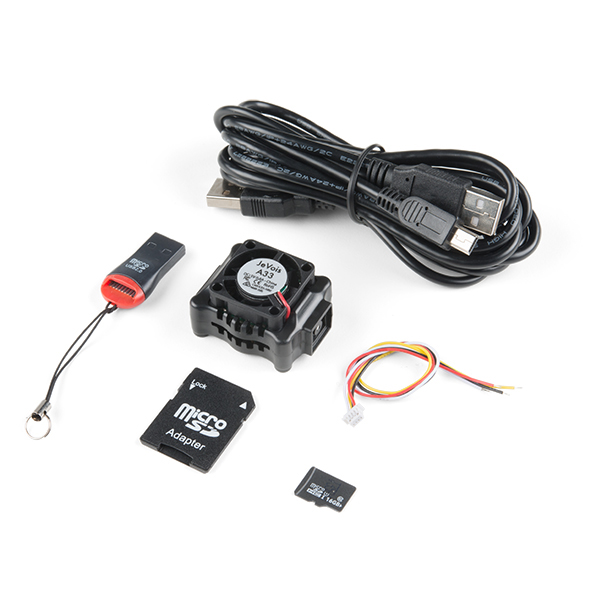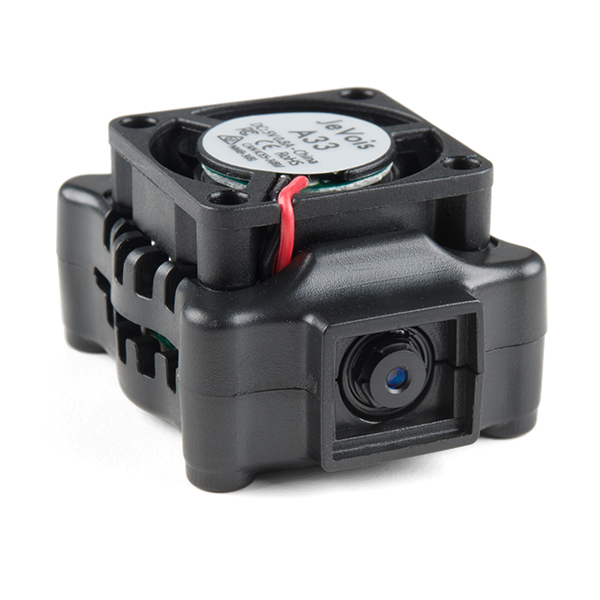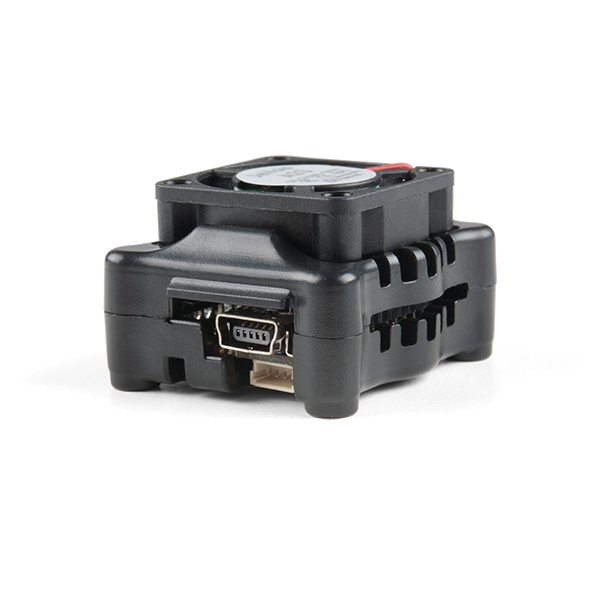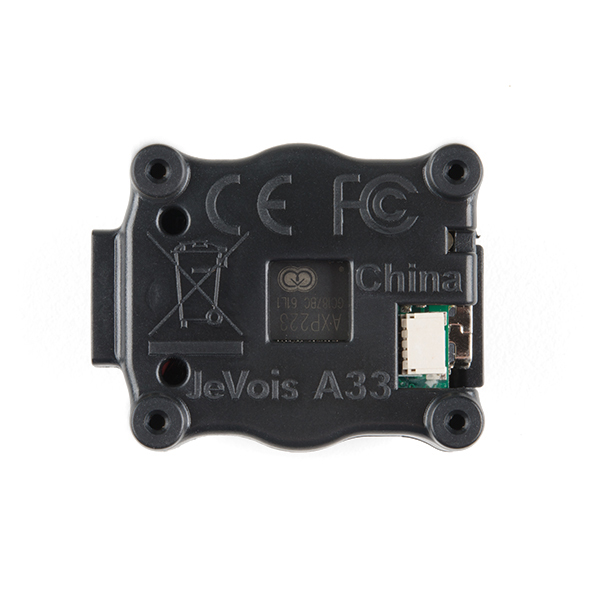JeVois Smart Machine Vision Camera
The JeVois Camera is a low cost, all-in-one 1.3MP machine vision camera. With an on board quad core CPU and MicroSD slot, all computer vision algorithms run on the device itself and can interface to computers or other devices such as Arduinos via USB or serial connection. At just 1.7 cubic inches and 17g, this sensor is one of the smallest TensorFlow enabled, deep learning AI, smart camera on the market today. With the added ability to run most popular machine vision frameworks (Open CV 4.0.0, Caffe, Darknet), you will have plenty of options when it comes to deciding how you want to operate your new camera!
The plastic case has four mounting holes making positioning the device simple along with an integrated cooling fan insuring no overheating or thermal throttling. For those looking to get into machine vision, this camera stands to be a solid, inexpensive starting point.
- 1.3MP Jevois Camera
- Dual USB-A to USB-MiniB Cable.
- MicroSd to USB Adapter
- 16GB MicroSD Card with MicroSD to SD Adapter (Comes with the latest firmware pre-installed)
- JST to Bare Wire Interface Cable for serial connection
- Comes in a reusable metal case
- Processor: Allwinner A33 quad core ARM Cortex A7 processor @ 1.34GHz with VFPv4 and NEON, and a dual core Mali-400 GPU supporting OpenGL-ES 2.0.
- Memory: 256MB DDR3 SDRAM.
- Solid state disk: micro SD slot for firmware, Linux operating system, machine vision software, and data. Supports up to 25Mbyte/s.
- Camera sensor: 1.3MP camera with:
- SXGA (1280 x 1024) up to 15 fps (frames/second)
- VGA (640 x 480) up to 30 fps
- CIF (352 x 288) up to 60 fps
- QVGA (320 x 240) up to 60 fps
- QCIF (176 x 144) up to 120 fps
- QQVGA (160 x 120) up to 60 fps
- QQCIF (88 x 72) up to 120 fps
- Camera field of view: 65 degrees horizontal, F2.8, 4:3 sensor aspect ratio.
- USB device interface: mini USB port for power, video streaming (UVC webcam standard), and serial-over-USB command-line interface and text data streaming.
- Hardware serial port: 5V or 3.3V (selected through VCC-IO pin) micro serial port connector to communicate with Arduino or other embedded controllers.
- Power: 3.5 Watts maximum from USB port. Requires USB 3.0 port or Y-cable to two USB 2.0 ports.
- Thermal: Integrated cooling fan, maintain stable 1.34GHz speed under full processor load, no overheating or thermal throttling.
- LED: One two-color LED: Green: power is good. Orange: power is good and camera is streaming video frames.
- Size: 28 cc or 1.7 cubic inches (plastic case included with 4 holes for secure mounting).
- Weight: 17 grams (not including microSD card, which is about 1 gram).
JeVois Smart Machine Vision Camera Product Help and Resources
Core Skill: Programming
If a board needs code or communicates somehow, you're going to need to know how to program or interface with it. The programming skill is all about communication and code.
Skill Level: Competent - The toolchain for programming is a bit more complex and will examples may not be explicitly provided for you. You will be required to have a fundamental knowledge of programming and be required to provide your own code. You may need to modify existing libraries or code to work with your specific hardware. Sensor and hardware interfaces will be SPI or I2C.
See all skill levels
Core Skill: Electrical Prototyping
If it requires power, you need to know how much, what all the pins do, and how to hook it up. You may need to reference datasheets, schematics, and know the ins and outs of electronics.
Skill Level: Rookie - You may be required to know a bit more about the component, such as orientation, or how to hook it up, in addition to power requirements. You will need to understand polarized components.
See all skill levels
Comments
Looking for answers to technical questions?
We welcome your comments and suggestions below. However, if you are looking for solutions to technical questions please see our Technical Assistance page.
Customer Reviews
3 out of 5
Based on 1 ratings:
Nice camera system with AI in it
You can do quick computer vision projects with it. It is too small, so can be added to you RC vehicle, drone etc. Only problem I have is that the USB communication. As soon as you change to a different example, the communication corrupts, and the visulizer SW on your host PC starts looking for the camera, but couldn't find it. Then, you need to restart the SW, then it will work.







This looks pretty nice. Are you considering carrying the version with the lens-aligned IMU for SLAM or structure-from-motion kinds of applications?